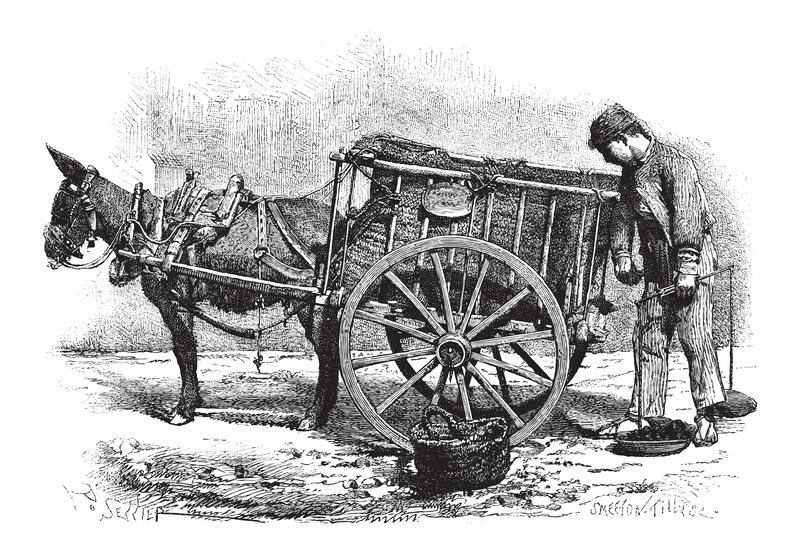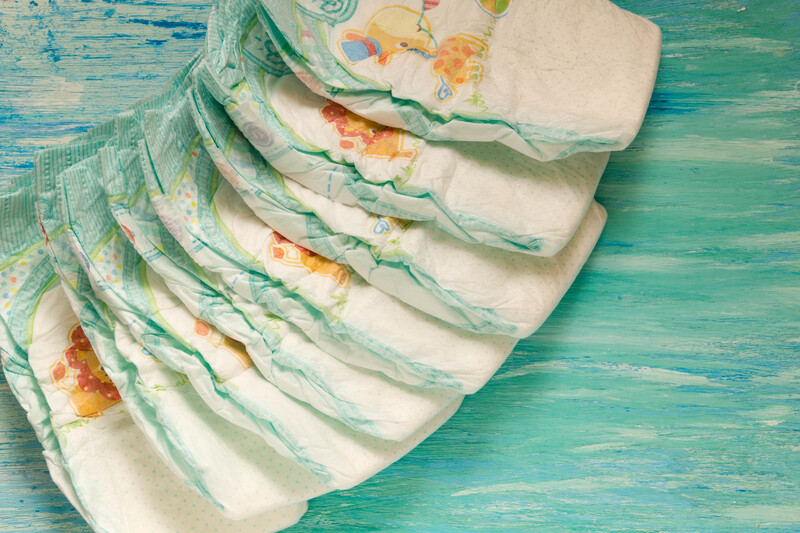Turn Cardboard and Packaging Waste into Playful Kids' Projects
Are you looking for creative ways to reduce household waste while keeping your children busy and inspired? Turning cardboard and packaging waste into playful kids' projects is not only an eco-friendly initiative, but it's also a fantastic way to foster imagination, motor skills, and problem-solving abilities. In this comprehensive guide, we'll explore the best techniques and ideas to help you repurpose cardboard boxes, packaging inserts, and other recyclable materials into interactive kids' crafts that delight and educate.

Why Recycle Cardboard and Packaging for Children's Projects?
Cardboard packaging waste is one of the most abundant materials in homes worldwide. From cereal boxes to shoe packaging, these resources often end up in the recycling bin--or worse, in a landfill. By transforming these materials into playful crafting activities for kids, you:
- Teach environmental responsibility
- Encourage resourcefulness and creativity
- Support hands-on learning
- Save money on store-bought toys and art supplies
- Foster meaningful family bonding time
Whether you're a parent, teacher, or young crafter, recycled cardboard projects provide endless opportunities for eco-friendly fun.
Preparing Cardboard and Packaging for Children's Crafts
Before you embark on your adventure of upcycling cardboard into playful kids' crafts, take a few preparatory steps to ensure safety and creativity:
- Clean all packaging materials. Remove food residue and adhesives to prevent mess and health hazards.
- Sort by shape and size. Set aside large boxes for big builds and small inserts for detailed crafts.
- Gather complementary supplies. Have scissors, glue, markers, paints, tape, and recycled odds-and-ends on hand.
- Supervise children, especially when using sharp tools or glue guns.
With these steps, your recycled crafting session will be safe, organized, and productive.
Creative Kids' Projects Using Cardboard and Packaging Waste
Let's dive into imaginative ways to turn ordinary packaging waste into fun, playful children's activities. Here are some engaging and educational projects perfect for all ages:
1. Cardboard Box Playhouses and Forts
- Build miniature houses, forts, or castles from large appliance boxes.
- Let kids design windows, doors, and roofs using scissors and crayons.
- Decorate with leftover wrapping paper, painted details, and even fabric scraps.
- Turn the house into different themes each week--space stations, animal shelters, or fire stations add excitement.
This cardboard box project encourages imaginative play, social interaction, and storytelling.
2. DIY Cardboard Vehicles
- Transform medium-sized packaging into race cars, rocket ships, or trains that kids can sit in or carry.
- Use bottle caps for wheels and old string to create pull-along toys.
- Let kids personalize their vehicles with paints, stickers, and other recycling bin treasures.
A cardboard car or spaceship is perfect for pretend transportation adventures right in your living room.
3. Recycled Cardboard Animals and Puppets
- Cut out animal shapes and decorate them to make personalized puppets.
- Add movable parts using split pins or brads for interactive fun.
- Attach craft sticks for easy puppet show play.
Cardboard animal crafts support fine motor skill development and dramatic play.
4. Cardboard Maze and Marble Run
- Create a maze or marble run using shoebox lids and packaging inserts.
- Use drinking straws, tubes, or folded cardboard strips for walls.
- Drop in a marble and race to the finish--adjust the maze for different difficulty levels.
This activity is *educational* and fun, promoting problem-solving and spatial reasoning.
5. Upcycled Cardboard Art Projects
- Use cardboard scraps as canvases for bold paintings, mosaics, or collages.
- Create 3D sculptures by layering shapes and inventing new forms.
- Incorporate additional recycled materials like aluminum foil, buttons, and fabric pieces.
Every finished piece is a unique masterpiece and a reminder of the beauty that comes from sustainability.
6. Recycled Board Games and Puzzles
- Design custom board games using flat cardboard, drawing the game path, and inventing your own rules.
- Cut out puzzle shapes and decorate them for a personalized brain-teaser.
- Encourage siblings and friends to invent new challenges for each other.
Building games from recycled packaging blends creativity with critical thinking.
Educational Benefits of Upcycling Cardboard with Kids
Turning waste into playful kids' crafts is more than a creative pastime. It delivers substantial educational benefits across different age groups:
- STEM Skills: Engineering mazes and marble runs introduce scientific thinking, cause and effect, and design principles.
- Fine Motor Skills: Cutting, folding, and assembling cardboard enhances dexterity.
- Literacy and Communication: Puppet shows, storytime forts, and board games foster vocabulary, storytelling, and cooperation.
- Social-Emotional Learning: Collaborative crafting projects build teamwork, patience, and confidence.
- Sustainability Awareness: Every upcycling project reinforces environmental stewardship from a young age.
Top Tips for Success with Cardboard and Packaging Crafts
Make the most of your eco-friendly crafting sessions with these expert tips:
- Start simple: For young children, focus on easy projects like masks, hats, or small vehicles.
- Use bright colors: Let kids decorate their crafts with vibrant paints or markers.
- Don't worry about perfection: Mistakes are learning opportunities! Focus on fun and experimentation.
- Mix-and-match materials: Combine cardboard with egg cartons, bottle caps, or old magazines for variety.
- Display finished projects: Celebrate your child's creativity by showcasing crafts in a "gallery" at home.
Inspiring Project Ideas: Step-by-Step Guides
How to Make a Cardboard Kitchen Set
- Start with a sturdy box for the oven body. Cut a door and use a small box or tray for the stovetop.
- Add bottle cap knobs and handles using pipe cleaners or twine.
- Decorate with colored paper, stickers, or paint.
- For accessories, upcycle plastic lids, small boxes, and scraps for pots, pans, and utensils.
Pretend cooking encourages imaginative play and early math skills (measuring, sorting, counting).
How to Make a Cardboard Aquarium
- Use a shoebox on its side as the aquarium tank.
- Paint or color the inside blue and green for water and plants.
- Cut fish shapes from packaging, punch holes, and hang them with string across the box's top.
- Add details like sand, rocks, or seaweed using colored paper and natural items.
This project is excellent for teaching about aquatic ecosystems.
Cardboard Instruments: Guitar or Drum
- Stretch rubber bands across a tissue box for strings.
- For a drum, cut both ends off a can or use a cylinder-shaped package, then stretch decorated paper across the opening.
- Use pencils or chopsticks as drumsticks.
- Let kids create a mini band and perform for the family!
Making music with upcycled instruments is a great way to blend art and science.
How to Store and Organize Cardboard Craft Supplies
- Sort by material type and size: Keep a labeled bin for small boxes, tubes, lids, and scraps.
- Flatten boxes for storage: Save space until you're ready to build.
- Keep tools handy: Store glue, scissors, and paints in an easy-to-reach drawer or caddy.
- Rotate projects: When crafts get worn or outgrown, recycle or compost the pieces if possible.
A little organization makes spontaneous crafting easy and stress-free!
Sustainable Mindset: Teaching Kids About Recycling and the Circular Economy
Turning cardboard packaging waste into playful projects is the perfect opportunity to talk to children about the environment. Discuss:
- What happens to packaging waste when we throw it away?
- Why is it important to recycle and reuse?
- How can creative solutions help the planet?
- What other materials can be upcycled at home?
These family conversations can shape positive, lifelong sustainability habits.
Sharing and Celebrating Your Upcycled Cardboard Creations
Share your creative journey! Take photos of completed projects and consider:
- Posting on social media with other eco-conscious families
- Entering local library or school crafting contests
- Starting a neighborhood swap for boxes and supplies
- Documenting crafts in a scrapbook or digital album
Celebrating your recycled packaging crafts motivates kids to keep creating and caring for the earth.

Conclusion: Transforming Cardboard and Packaging Waste into Endless Play
With imagination and a bit of preparation, empty boxes and packaging can fuel hours of playful kids' projects and learning. By teaching children to upcycle cardboard waste into art, games, and tools for pretend play, you're reducing waste, saving money, and building valuable life skills. Next time you unpack a parcel, see the hidden potential in every piece of packaging--your next masterpiece awaits!
Essential Tools Checklist for Cardboard Kids' Crafts
- Safety scissors and glue
- Non-toxic paints and markers
- Reusable tape and staplers
- Decorative paper and stickers
- Small recycled items: bottle caps, yarn, buttons
- Cleaning supplies for prepping boxes
Having these essentials on hand guarantees a smooth transition from waste to wonder with every crafting adventure.
Frequently Asked Questions: Cardboard and Packaging Kids' Projects
Are cardboard crafts safe for small children?
Yes, as long as adults supervise cutting and gluing, and avoid sharp or hazardous materials.
How can I make my cardboard crafts last longer?
Add extra tape or glue to the joints, reinforce weak areas with double layers, and store finished crafts in a dry, cool place.
What other household waste can be used for kids' crafts?
Try egg cartons, paper towel tubes, milk jugs, plastic containers, and fabric scraps for variety and creativity.
Begin your journey today--turn cardboard and packaging waste into playful kids' projects and unlock a world of imaginative, sustainable fun!